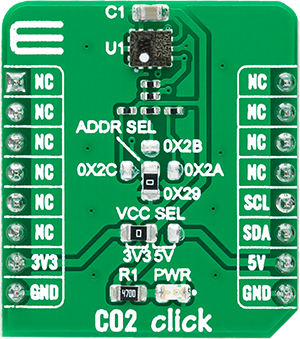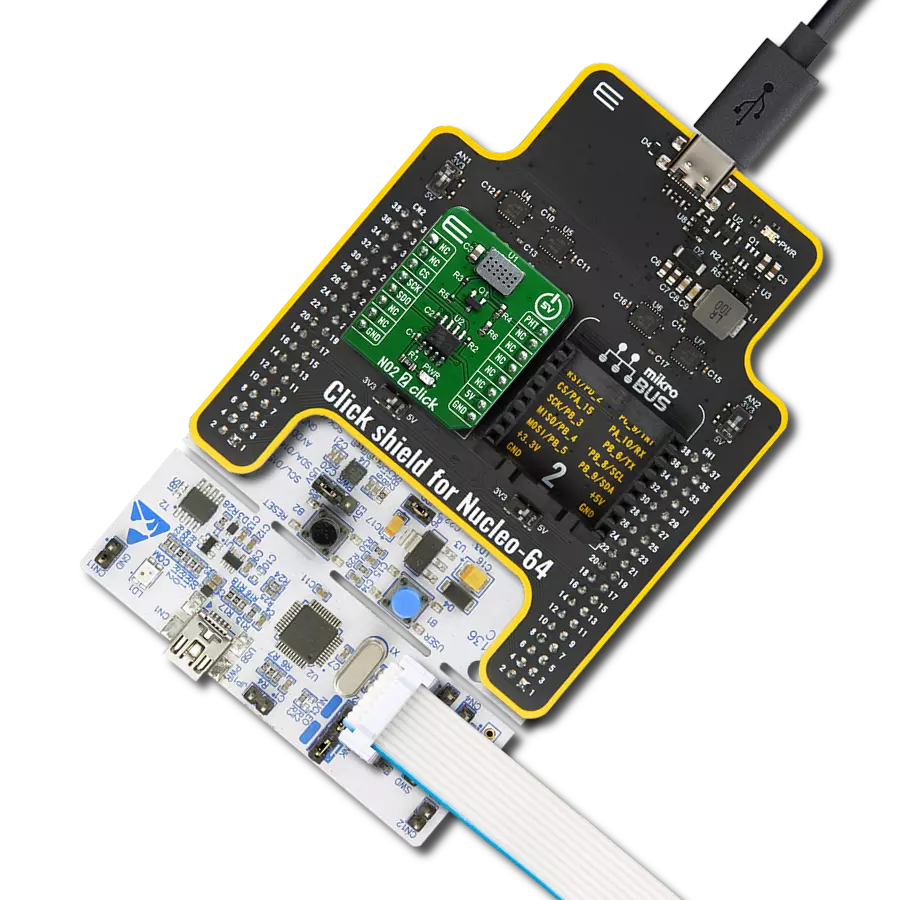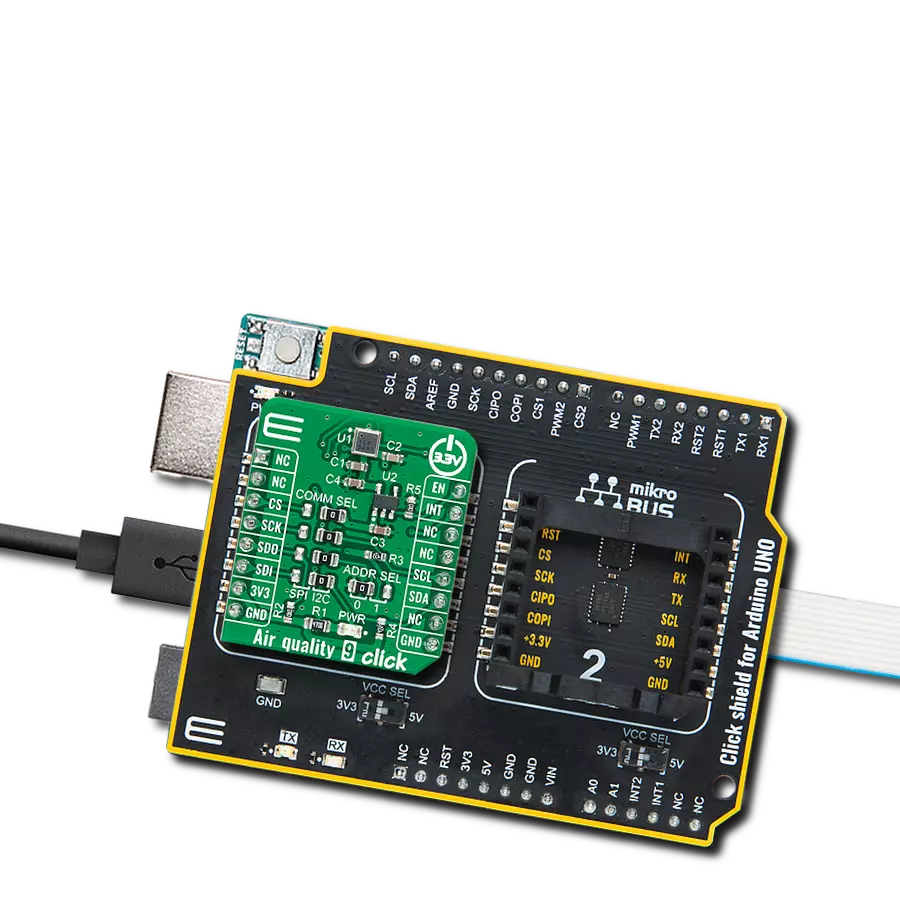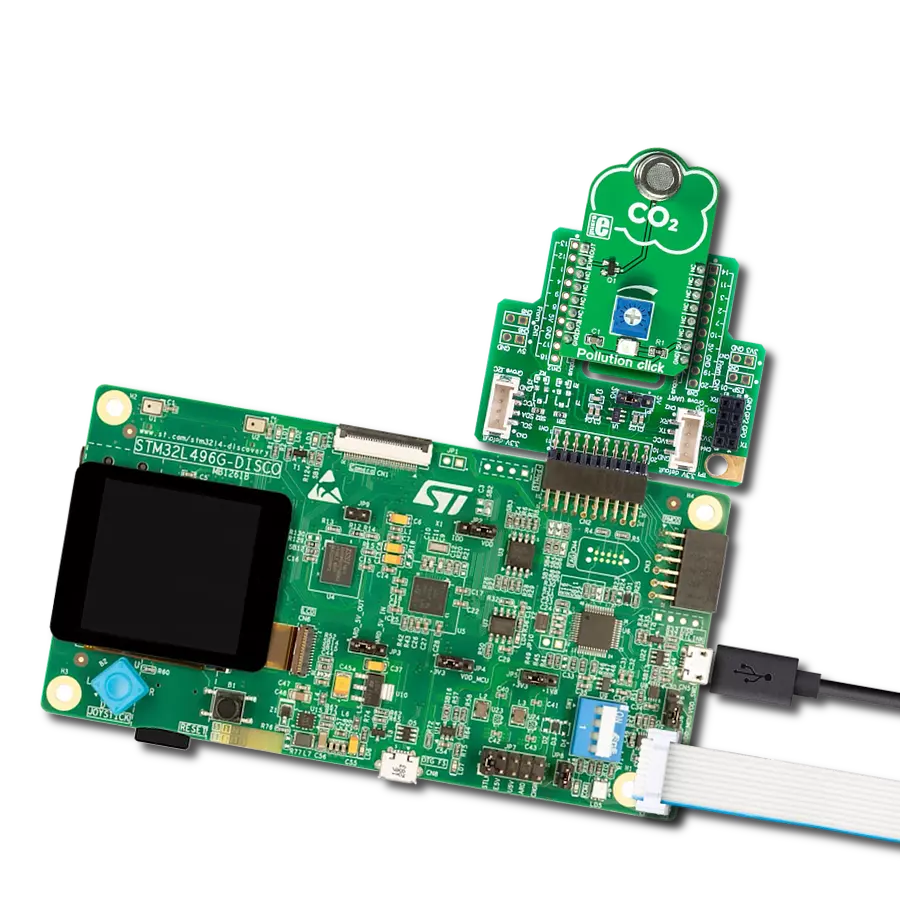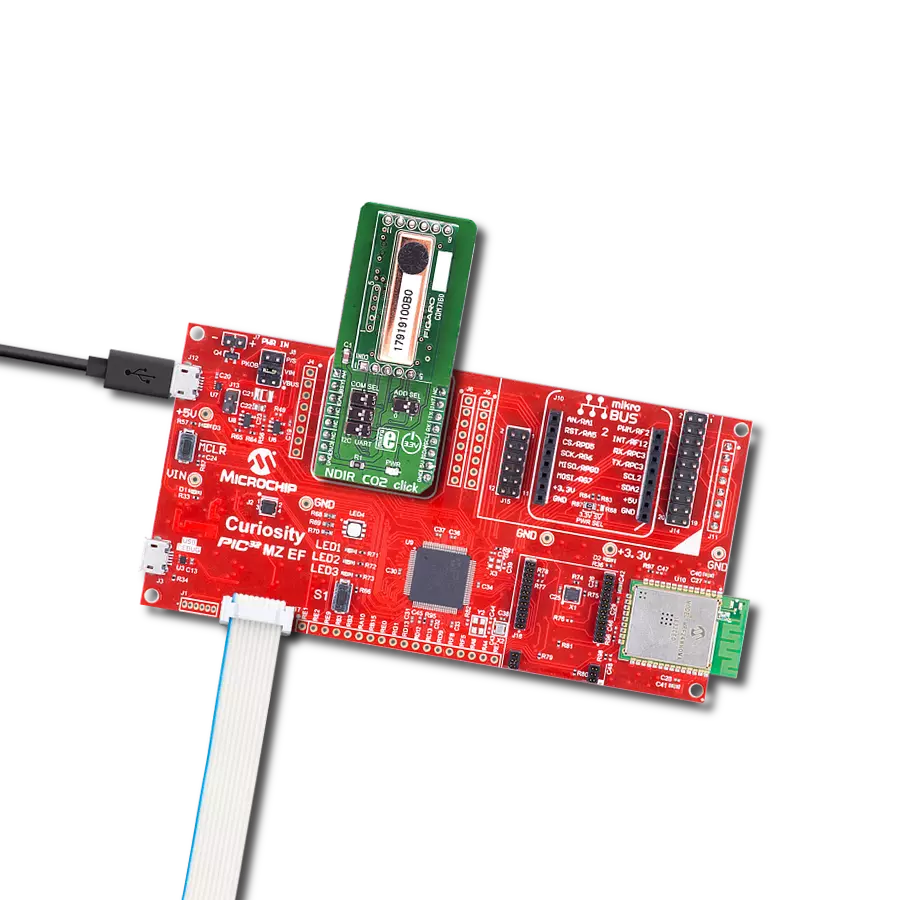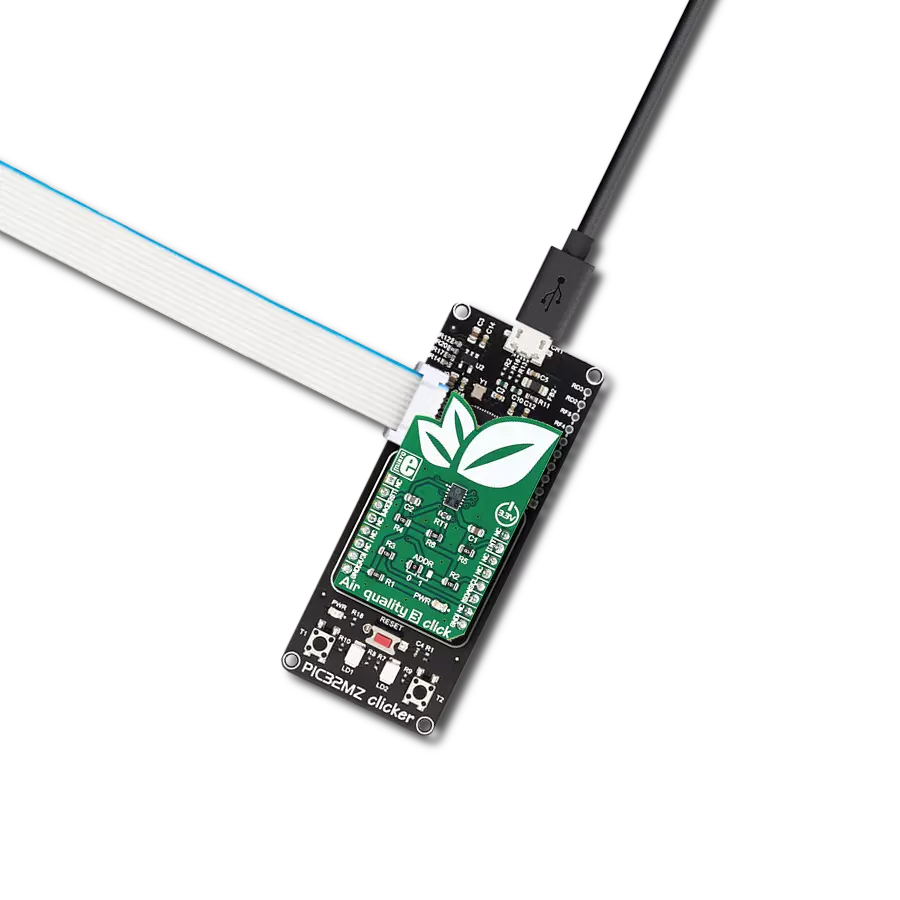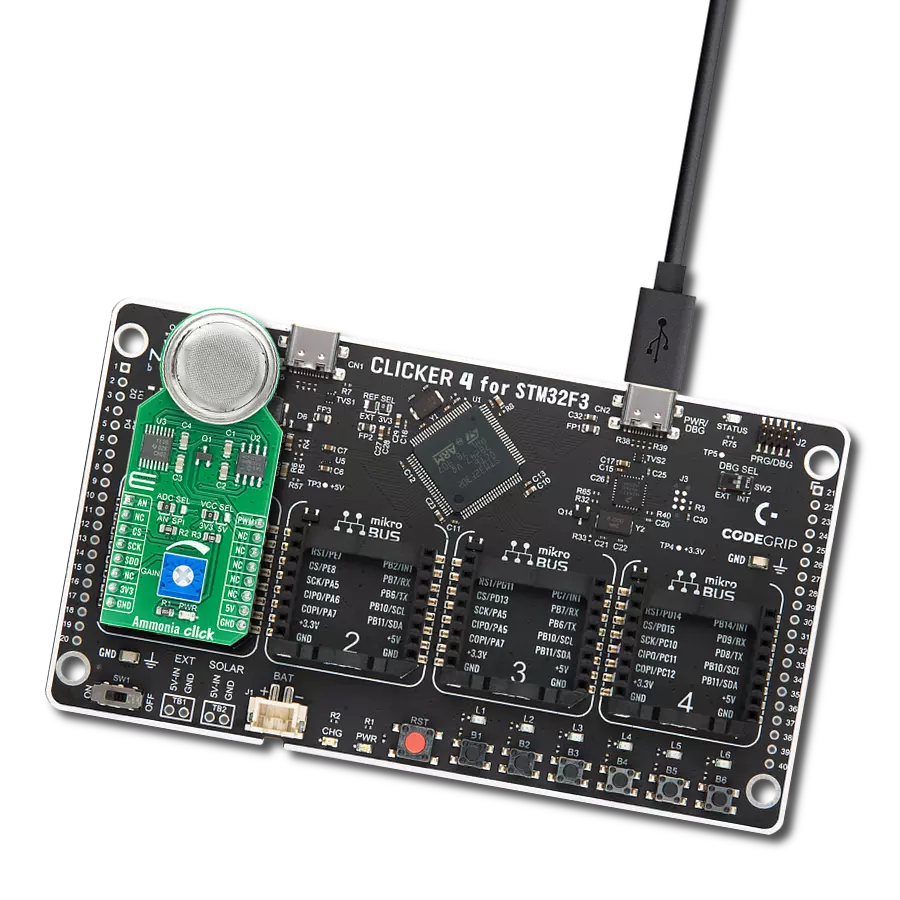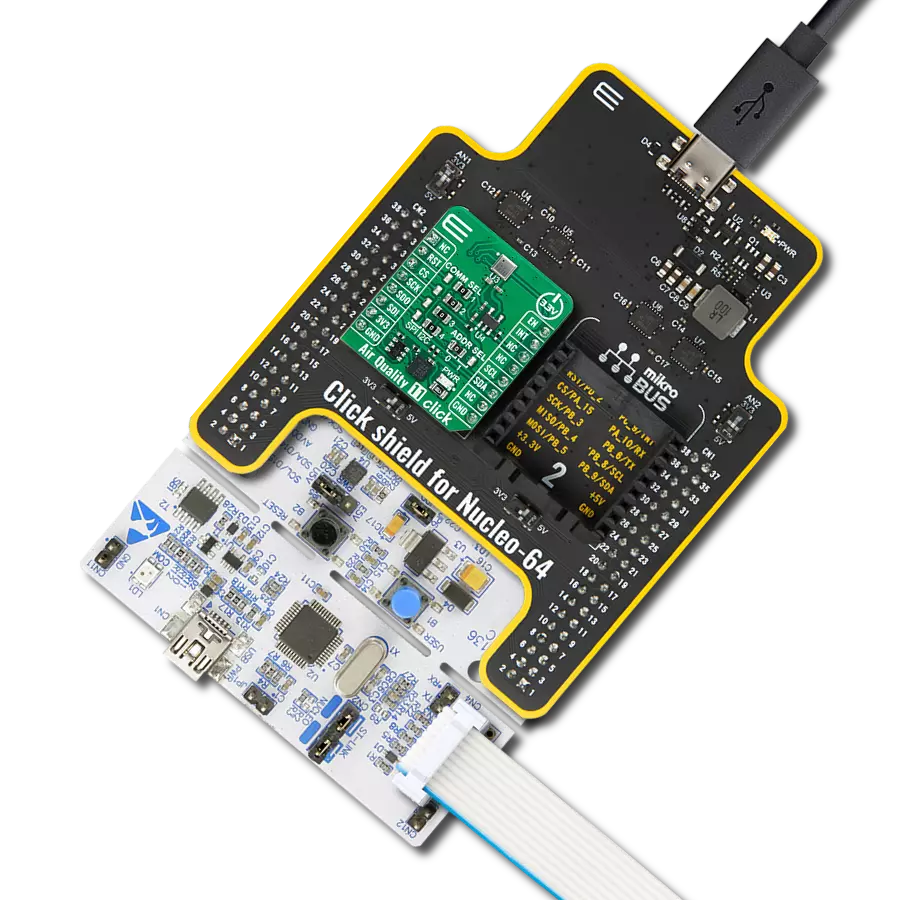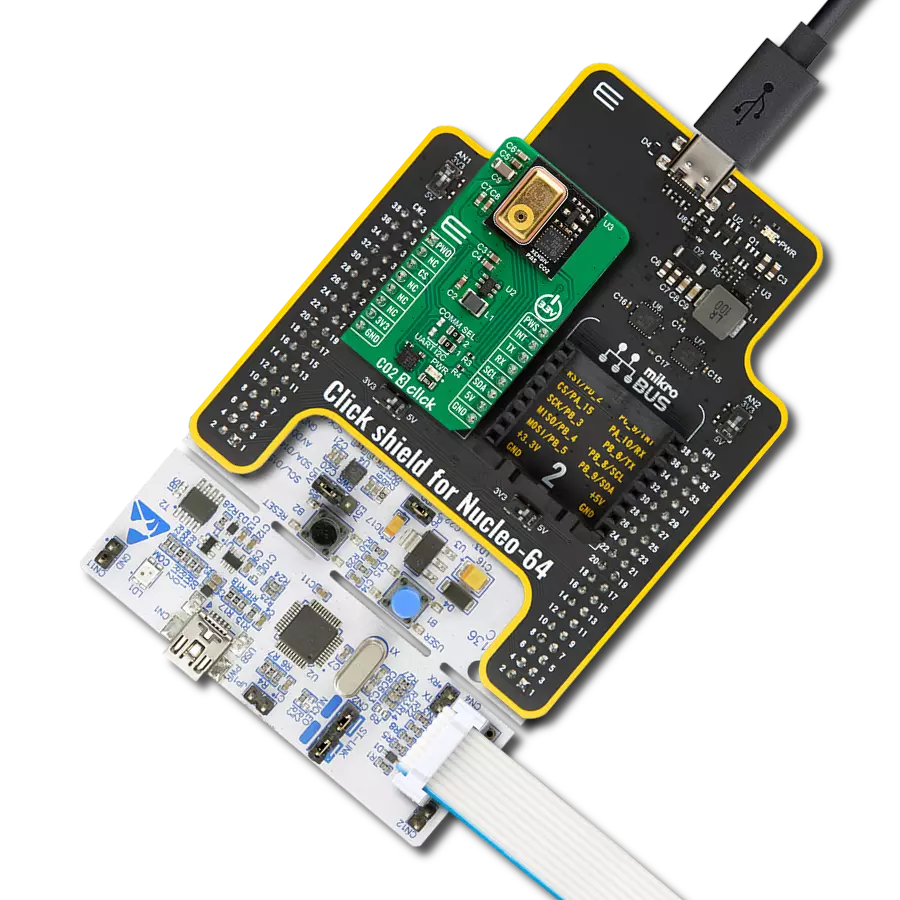Ensure the safety of your residential environments with a reliable high CO2 concentration monitoring solution
A
A
Hardware Overview
How does it work?
CO2 Click is based on the STC31, a gas concentration sensor for high-range, accurate CO2 measurements designed for high-volume applications from Sensirion. The STC31 is based on a revolutionized thermal conductivity measurement principle, which results in superior repeatability and long-term stability. The sensor offers ultra-low power consumption by relying on thermal conductivity technology, making the STC31 the perfect choice for applications where reliability is vital. The accuracy of the STC31 is 0.5 vol% and ±3% of the measured value, while the sensor response time is faster than 1 second.
The outstanding performance of these sensors is based on Sensirion’s patented CMOSens® Technology, which combines the sensor element, signal processing, and digital calibration on a small CMOS chip. The well-proven CMOSens® Technology is ideal for demanding and cost-sensitive OEM applications. CO2 Click communicates with MCU using the standard I2C 2-Wire interface to read data and configure settings, supporting Standard Mode operation with a clock frequency up to 100kHz, Fast Mode up to 400kHz, and Fast Mode Plus up to 1MHz. Besides, it also allows the choice of the three least
significant bits of its I2C slave address by positioning the SMD jumper labeled as ADDR SEL to an appropriate position, providing the user with a choice of 4 I2C Slave addresses. This Click board™ can operate with either 3.3V or 5V logic voltage levels selected via the VCC SEL jumper. This way, both 3.3V and 5V capable MCUs can use the communication lines properly. Also, this Click board™ comes equipped with a library containing easy-to-use functions and an example code that can be used as a reference for further development.
Features overview
Development board
PIC32MZ Clicker is a compact starter development board that brings the flexibility of add-on Click boards™ to your favorite microcontroller, making it a perfect starter kit for implementing your ideas. It comes with an onboard 32-bit PIC32MZ microcontroller with FPU from Microchip, a USB connector, LED indicators, buttons, a mikroProg connector, and a header for interfacing with external electronics. Thanks to its compact design with clear and easy-recognizable silkscreen markings, it provides a fluid and immersive working experience, allowing access anywhere and under
any circumstances. Each part of the PIC32MZ Clicker development kit contains the components necessary for the most efficient operation of the same board. In addition to the possibility of choosing the PIC32MZ Clicker programming method, using USB HID mikroBootloader, or through an external mikroProg connector for PIC, dsPIC, or PIC32 programmer, the Clicker board also includes a clean and regulated power supply module for the development kit. The USB Micro-B connection can provide up to 500mA of current, which is more than enough to operate all onboard
and additional modules. All communication methods that mikroBUS™ itself supports are on this board, including the well-established mikroBUS™ socket, reset button, and several buttons and LED indicators. PIC32MZ Clicker is an integral part of the Mikroe ecosystem, allowing you to create a new application in minutes. Natively supported by Mikroe software tools, it covers many aspects of prototyping thanks to a considerable number of different Click boards™ (over a thousand boards), the number of which is growing every day.
Microcontroller Overview
MCU Card / MCU
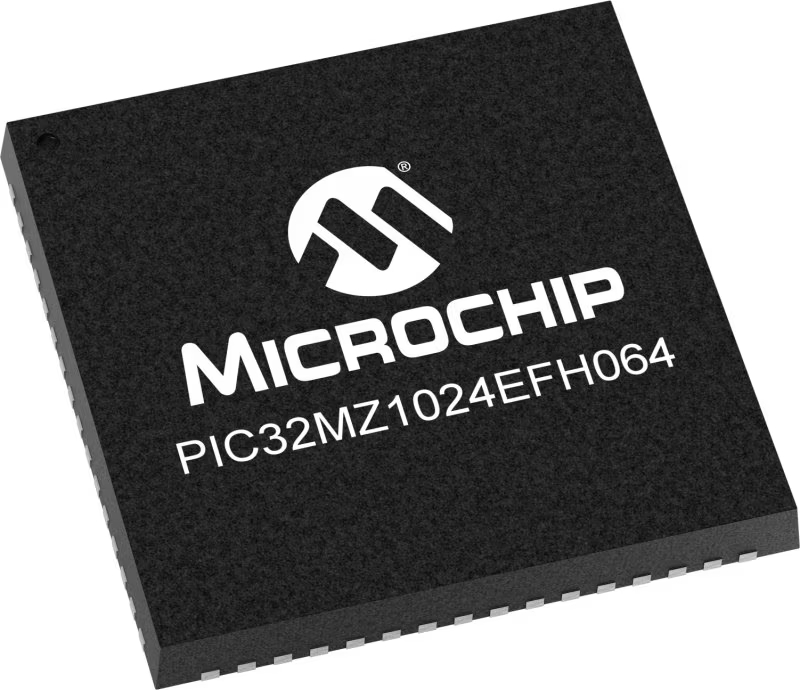
Architecture
PIC32
MCU Memory (KB)
1024
Silicon Vendor
Microchip
Pin count
64
RAM (Bytes)
524288
Used MCU Pins
mikroBUS™ mapper
Take a closer look
Click board™ Schematic

Step by step
Project assembly
Software Support
Library Description
This library contains API for CO2 Click driver.
Key functions:
co2_get_id- Read device and serial ID'sco2_set_reference- Set device refrence values for gas calculationco2_read_gas- Read CO2 concentration and temperature value
Open Source
Code example
The complete application code and a ready-to-use project are available through the NECTO Studio Package Manager for direct installation in the NECTO Studio. The application code can also be found on the MIKROE GitHub account.
/*!
* @file main.c
* @brief CO2 Click example
*
* # Description
* This example showcases ability of Click board. It reads ID's
* configures device for operation work and reads CO2 gas
* concentration in air and temperature of IC every second.
*
* The demo application is composed of two sections :
*
* ## Application Init
* Initialization of host communication modules (UART, I2C).
* Checks device and serial ID's from device. Then calls default
* configuration function that resets device, self tests it selft
* and configures for measuring CO2 concentration from air.
*
* ## Application Task
* Reads air CO2 gas concentration in precentage and IC's
* temperature in deg Celzius in span of 1 second and logs
* data to UART Terminal.
*
* @author Luka Filipovic
*
*/
#include "board.h"
#include "log.h"
#include "co2.h"
#define CO2_AIR_HUMIDITY 40/*< Relative air humidity in % */
#define CO2_AIR_PRESSURE 1008/*< Relative air pressure in mBar */
static co2_t co2;
static co2_cfg_t co2_cfg;
static log_t logger;
void application_init ( void )
{
log_cfg_t log_cfg; /**< Logger config object. */
/**
* Logger initialization.
* Default baud rate: 115200
* Default log level: LOG_LEVEL_DEBUG
* @note If USB_UART_RX and USB_UART_TX
* are defined as HAL_PIN_NC, you will
* need to define them manually for log to work.
* See @b LOG_MAP_USB_UART macro definition for detailed explanation.
*/
LOG_MAP_USB_UART( log_cfg );
log_init( &logger, &log_cfg );
log_info( &logger, " Application Init " );
// Click initialization.
co2_cfg_setup( &co2_cfg );
CO2_MAP_MIKROBUS( co2_cfg, MIKROBUS_1 );
err_t init_flag = co2_init( &co2, &co2_cfg );
if ( init_flag == I2C_MASTER_ERROR )
{
log_error( &logger, " Application Init Error. " );
log_info( &logger, " Please, run program again... " );
for ( ; ; );
}
init_flag = co2_get_id( &co2 );
if ( ( init_flag < 0 ) && ( co2.device_id != CO2_DEVICE_ID ) )
{
log_error( &logger, "ID" );
}
else
{
log_printf( &logger, " > Device ID: 0x%.8lX\r\n", co2.device_id );
log_printf( &logger, " > Serial ID: 0x%.8lX%.8lX\r\n", co2.serial_id[ 0 ], co2.serial_id[ 1 ] );
}
init_flag = co2_default_cfg ( &co2 );
if ( init_flag < 0 )
{
log_error( &logger, " Default configuration. " );
log_info( &logger, " Please, run program again... " );
for ( ; ; );
}
//Set reference values for device to calculate gas concentartion.
if ( CO2_OK != co2_set_reference( &co2, CO2_AIR_HUMIDITY, CO2_AIR_PRESSURE ) )
{
log_error( &logger, " Reference values." );
}
Delay_ms ( 1000 );
log_info( &logger, " Application Task " );
}
void application_task ( void )
{
float gas_data = 0;
float temp_data = 0;
if ( CO2_OK == co2_read_gas( &co2, &gas_data, &temp_data ) )
{
log_printf( &logger, " > CO2[%%]: %.2f\r\n", gas_data );
log_printf( &logger, " > Temperature[degC]: %.2f\r\n", temp_data );
Delay_ms ( 1000 );
}
Delay_ms ( 1 );
}
int main ( void )
{
/* Do not remove this line or clock might not be set correctly. */
#ifdef PREINIT_SUPPORTED
preinit();
#endif
application_init( );
for ( ; ; )
{
application_task( );
}
return 0;
}
// ------------------------------------------------------------------------ END





